5 U.S. National Parks With Amazing Black Bear Viewing Opportunities
By far the most common bear species in the world, American black bears (Ursus americanus) live and thrive all across North America. They’re residents of hundreds of parks in the U.S., including numerous national parks that are home to black bears.
Black bears are exceptionally abundant. Estimates say there are over 300,000 black bears in the contiguous United States and another 100,000 to 200,000 in Alaska, in addition to almost half a million in Canada.
So, if you’ve always wanted to see a black bear in the wild, there are some pretty great opportunities in America’s national parks, most of which are true wildlife havens.
Quick Facts About Black Bears
- Size: Approximately 3 feet at the shoulder on all fours; 5 to 7 feet when standing on hind legs
- Weight: Varies greatly between 100 and 400 pounds, depending on sex, age, season and area. Some male black bears (boars) can weight up to 600 pounds.
- Color: From black to cinnamon, blonde and blue/gray
- Lifespan: 15 to 25 years on average
- Food: Nearly anything. Black bears are omnivorous and eat both plants and animals (up to 85% of a black bear’s diet consists of plant material). Food sources range from carrion, small mammals, worms and insects to forbs, young shoots and buds, berries, acorns and other nuts. Yes, they also really like honey!
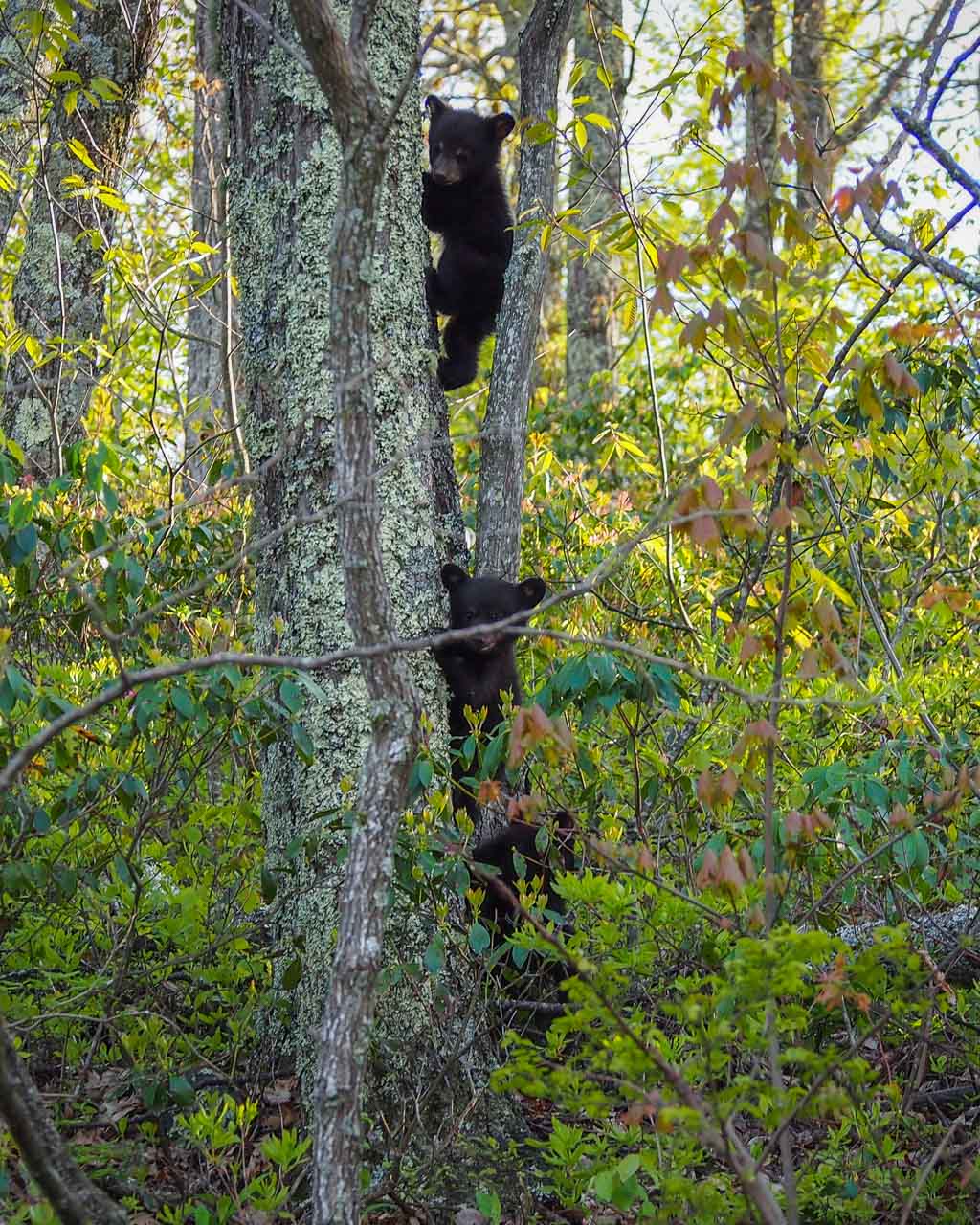
Black Bear or Grizzly Bear?
A number of national parks are home to both grizzly and black bears. For a couple of reasons, including simply knowing which animal you’re observing and how to respond when encountering one, it’s important to be able to distinguish between both species.
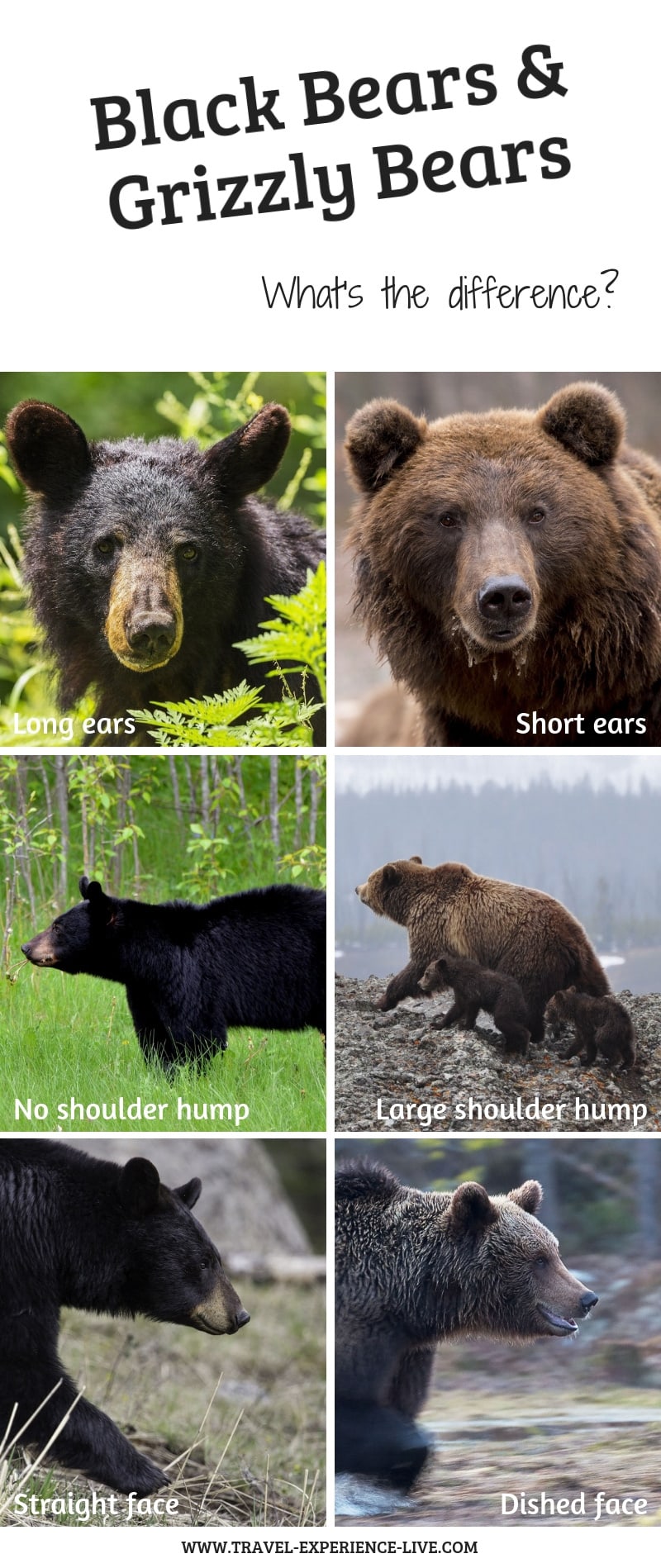
These U.S. National Parks Offer Fantastic Black Bear Viewing Opportunities
These small bears—the smallest bear species in North America—are so widespread that their total population is “more than twice that of all other species of bears combined”, according to the International Union for Conservation of Nature (IUCN).
Therefore, you have some pretty good chances to see black bears in many U.S. national parks. In fact, almost all national parks in the United States, except some urban parks and remote island parks, have a population of black bears.
To see which national parks have black bears, check out this National Park Service bear map.
Some parks are simply better for black bear watching than others though. Below, I’ve listed a handful of the absolute best national parks to see black bears in the wild.
Shenandoah National Park, Virginia
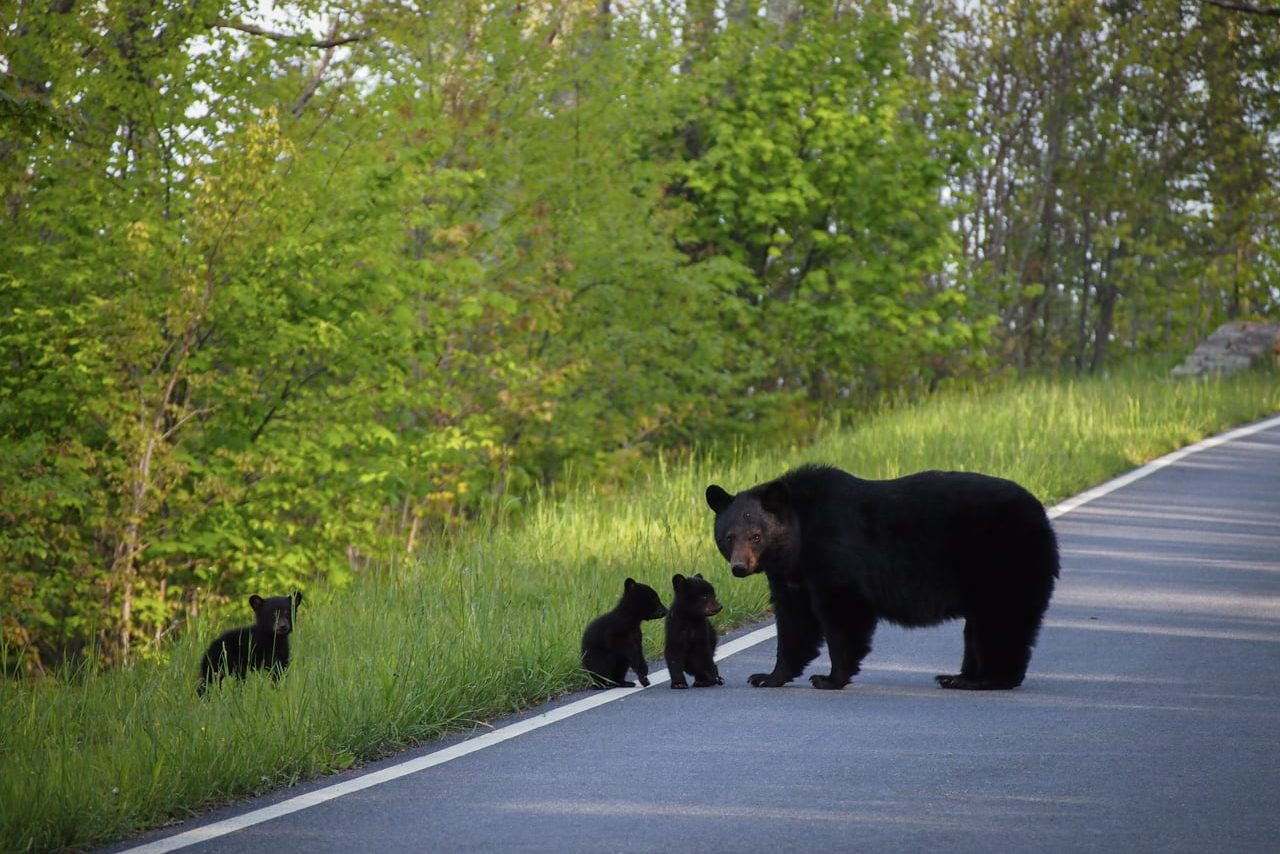
Shenandoah National Park is one of the best U.S. national parks for wildlife watching—and that’s largely thanks to its large black bear population. There are an estimated 5,000 to 6,000 black bears in Virginia, several hundreds of which call Shenandoah home.
The Shenandoah National Park black bear population ranges from the low hundreds to a thousand, depending on seasonal food availability, breeding cycles and other factors.
I can tell you from my own experience that you are very likely to spot at least one black bear when spending a day in Shenandoah. I’ve seen dozens along Skyline Drive and a handful while hiking in the park.
Black bears are so successful at Shenandoah National Park thanks to the park’s high-quality, contiguous forest habitats with plenty of food sources.
The park is home to everything from small mammals and lots of insects to oak trees, wildflowers, grasses and berries, all of which provide a varied diet to black bears.
Even though Shenandoah’s bears are shy and elusive, you should still know how to behave when you encounter a black bear in Shenandoah National Park. Carrying bear spray is always a good idea when hiking or recreating in bear country.
Best Places to See Black Bears in Shenandoah National Park
- Skyline Drive
- Big Meadows
- Longer trails such as Whiteoak Canyon and Trayfoot Mountain
More information about Shenandoah National Park’s black bears: https://www.nps.gov/shen/learn/nature/black-bear.htm
More About Shenandoah National Park
- Park Website
- Travel Guide
- Topographic Map
- Best Shenandoah Hikes
- Top Things To Do in Shenandoah National Park
- Viewpoints
- Accommodation
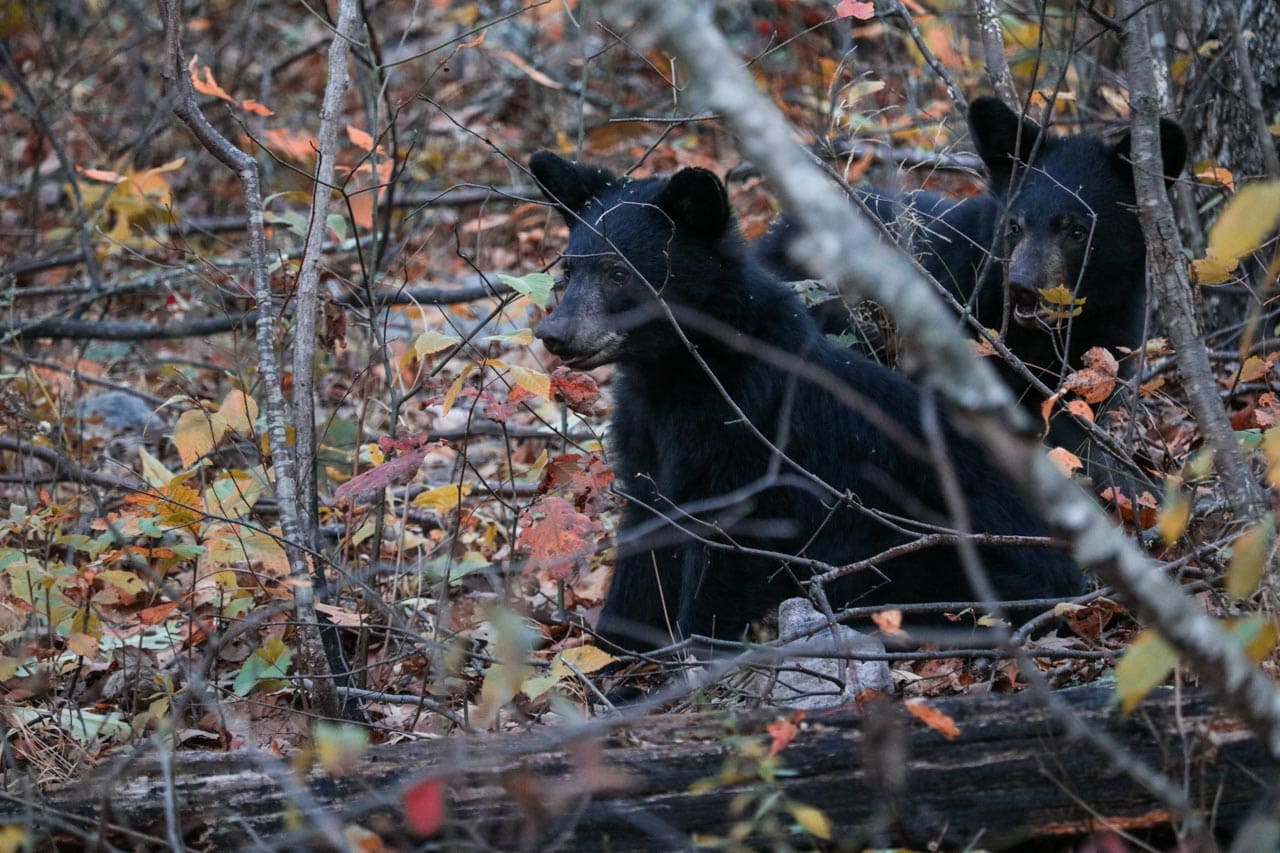
In addition to Shenandoah National Park, other Appalachian Mountains national parks also have healthy black bear populations.
Both in Great Smoky Mountains National Park and along the popular Blue Ridge Parkway, which connects Shenandoah and Great Smoky Mountains, your chances of spotting a black bear or two are excellent as well. In fact, Great Smoky Mountains has some of the densest concentrations of black bears in the U.S., with an estimated two bears per square mile!
Yellowstone National Park, Wyoming, Montana & Idaho
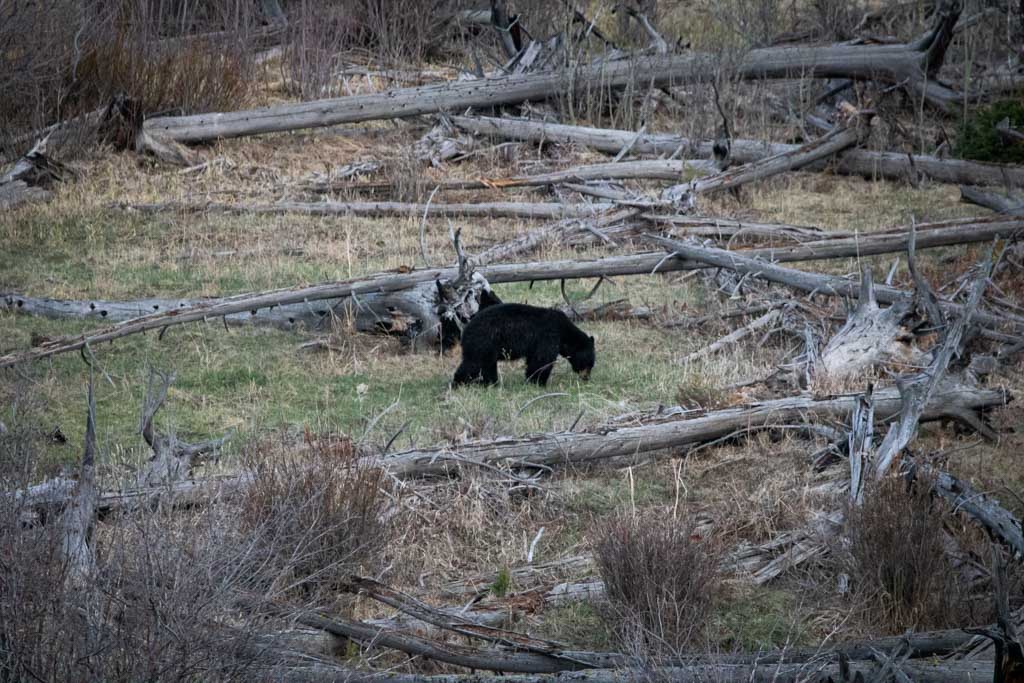
The number one wildlife viewing hotspot in North America, Yellowstone National Park is home to all kinds of megafauna. From American bison, moose and wolves to grizzly bears and black bears, Yellowstone is a wildlife lover’s dream destination.
Black bears were once a popular tourist attraction in Yellowstone—visitors were allowed to literally feed them on roadsides and at parking lots, while park rangers fed them at garbage dumps. Fortunately, however, that practice has been banned since 1960. Yet, to many people, black bears remain one of the very symbols of Yellowstone National Park.
They thrive in Yellowstone’s vast interior, its diverse landscapes providing a plethora of food sources. To the delight of many motorists, black bears are common sights along the Grand Loop Road, particularly in the northern range.
If you want to see black bears at Yellowstone, I recommend exploring the areas around Mammoth Hot Springs and Tower-Roosevelt, both of which are in the wildlife-rich Northern Range of Yellowstone.
Blacktail Plateau, between Mammoth and Tower, is especially known for its large numbers of black bears, as is the world-famous Lamar Valley. Other excellent black bear viewing locations in Yellowstone are Yellowstone Lake and Hayden Valley.
Best Places to See Black Bears in Yellowstone National Park
- Mammoth Hot Springs
- Tower-Roosevelt
- Blacktail Plateau
- Lamar Valley
- Hayden Valley
- Yellowstone Lake
More information about Yellowstone National Park’s black bears: https://www.nps.gov/yell/learn/nature/black-bear.htm
More About Yellowstone National Park
- Park Website
- Travel Guide
- Topographic Map
- Top Things To Do in Yellowstone National Park
- Best Spring Hikes in Yellowstone National Park
- Popular Activities Around Mammoth Hot Springs (Yellowstone)
- Accommodation
Grand Teton National Park, Wyoming
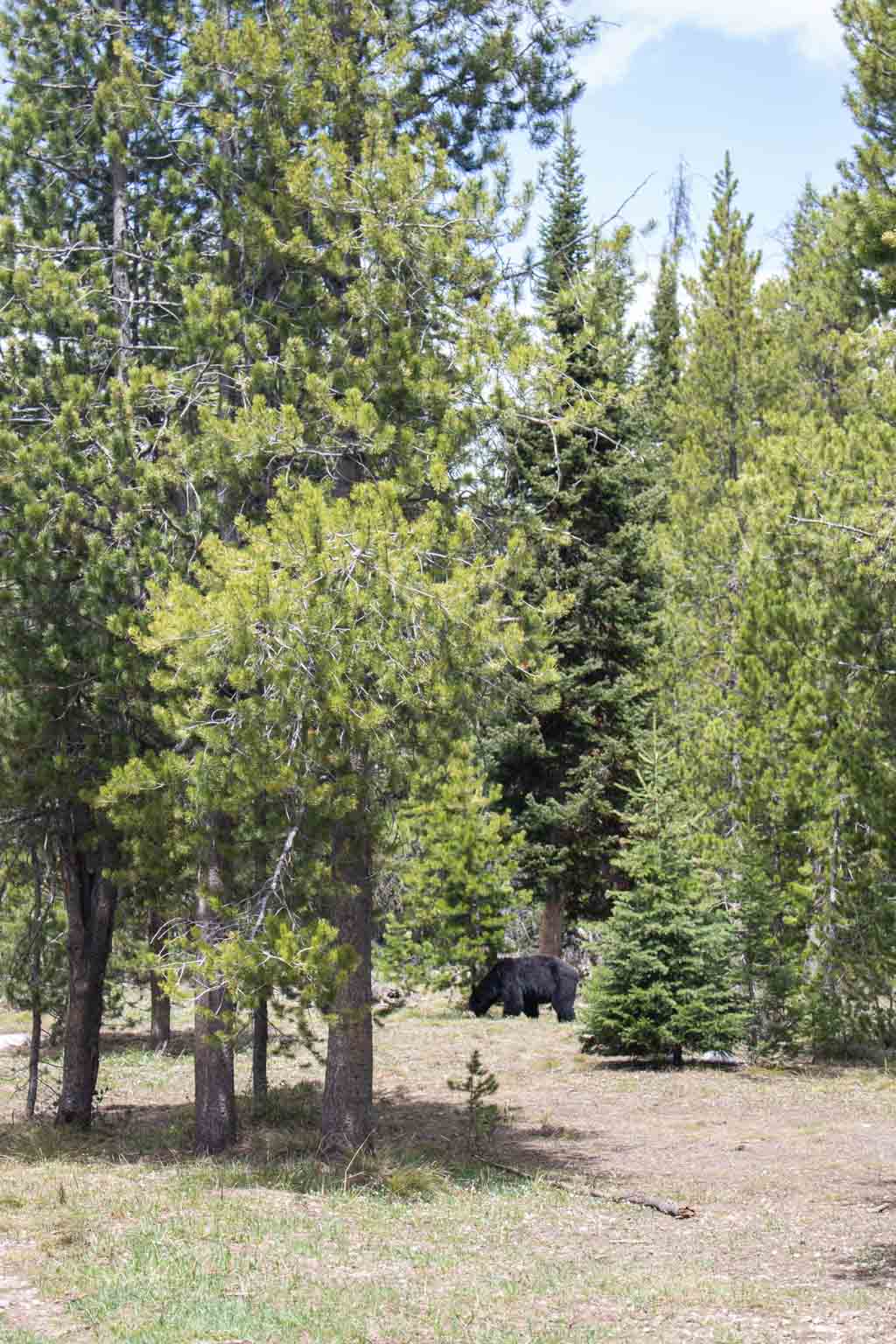
Yellowstone’s smaller neighbor to the south, Grand Teton National Park is one of the two national parks in Wyoming and is home to essentially the same animals, including numerous black bears.
The park’s pristine forests, many miles of lush lakeshores and riverbanks, expansive sagebrush flats and bouldery canyons provide a variety of sustenance to bears.
Black bears are most common in the western part of the park, which is where you’ll find most of its lakes, woodlands and the spectacular Teton Mountains.
Look for them around Jenny Lake, String Lake and Leigh Lake, as well as the section of the scenic Teton Park Road between Jenny Lake and Signal Mountain.
Remember, though, that it’s possible to encounter a black bear in Grand Teton National Park anytime and anywhere, especially on the park’s hiking trails.
Best Places to See Black Bears in Grand Teton National Park
- Jenny Lake, String Lake and Leigh Lake area
- Moose-Wilson Road
- Colter Bay
- Teton Park Road between Jenny Lake and Signal Mountain
More information about Grand Teton National Park’s black bears: https://www.nps.gov/grte/planyourvisit/bearsafety.htm
More About Grand Teton National Park
- Park Website
- Travel Guide
- Topographic Map
- Best Grand Teton Hikes
- Top Things To Do in Grand Teton National Park
- Best Views of the Tetons
- Names of Major Teton Range Peaks (With Photos)
- Accommodation
Glacier National Park, Montana
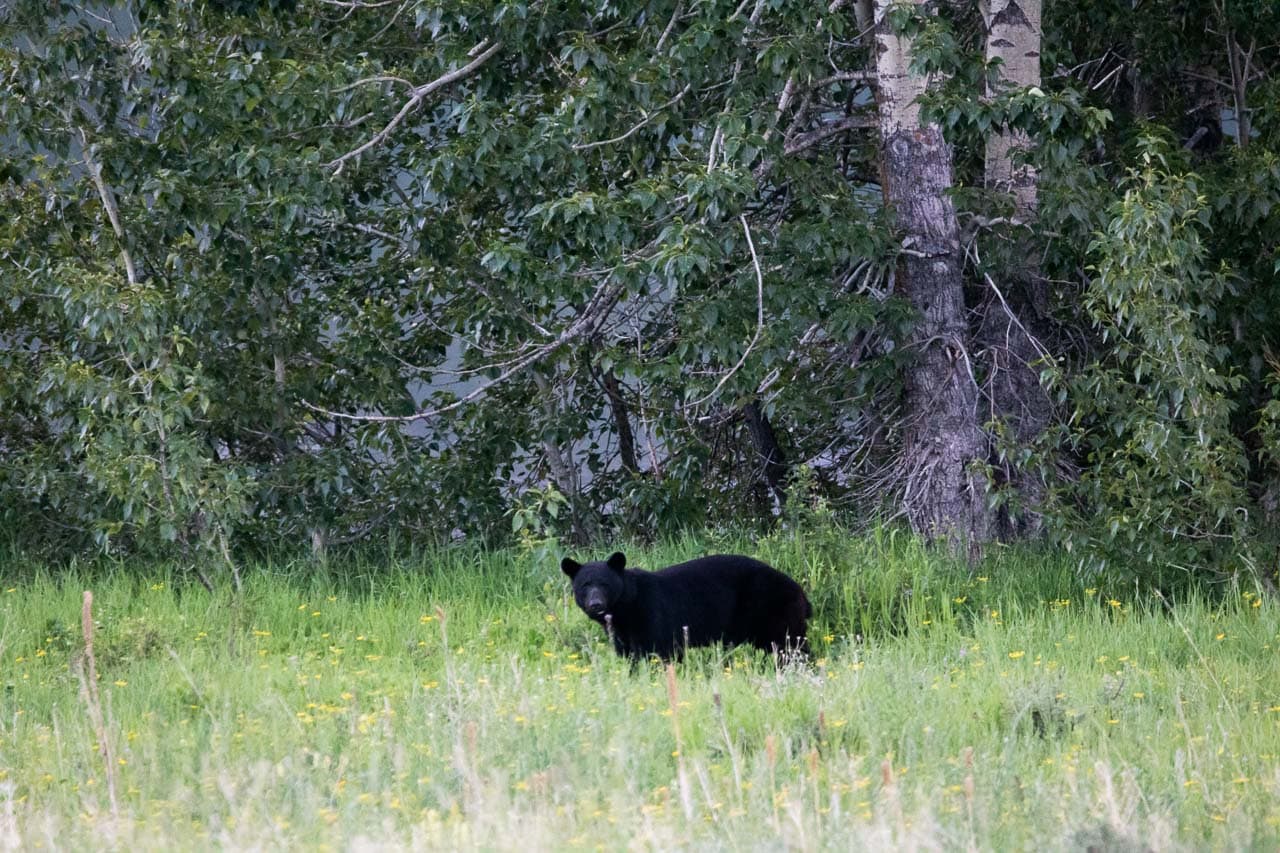
Just like the other two national parks in the Rocky Mountains above, Glacier also has a healthy black bear population, along with many grizzlies.
You could encounter a black bear in Glacier National Park basically anywhere, but they tend to hang out most in the park’s dense forests. Black bears do move around a lot, though, so don’t be surprised to see one among berry bushes or in avalanche chutes, too.
In the mornings or evenings, many black bears leave the cover of the trees and can be seen foraging in meadows.
One of the best areas to see black bears in Glacier National Park is the Many Glacier Road. Lined with meadows and woodlands, it is prime bear habitat. I’ve personally seen several black bears there in the evening.
Other places in Many Glacier known for regular black bear sightings are along Swiftcurrent Lake and Lake Josephine, and on the Iceberg Lake Trail.
All these hiking trails in Glacier National Park‘s eastern part are well known for their frequent bear sightings. You might even be able to see bears from the deck of the historic Many Glacier Hotel!
Elsewhere in Glacier National Park, particularly on the Going-to-the-Sun Road, you may see a black bear at Two Dog Flats near St. Mary or on the Avalanche Lake Trail just above Lake McDonald.
Best Places to See Black Bears in Glacier National Park
- Many Glacier Road
- Swiftcurrent Lake and Lake Josephine
- Iceberg Lake Trail
- Two Dog Flats
- Avalanche Lake Trail
More information about Glacier National Park’s black bears: https://www.nps.gov/glac/learn/nature/bears.htm
More About Glacier National Park
- Park Website
- Travel Guide
- Topographic Map
- Best Glacier Hikes
- Top Attractions on Going-to-the-Sun Road
- Accommodation
Mount Rainier National Park, Washington
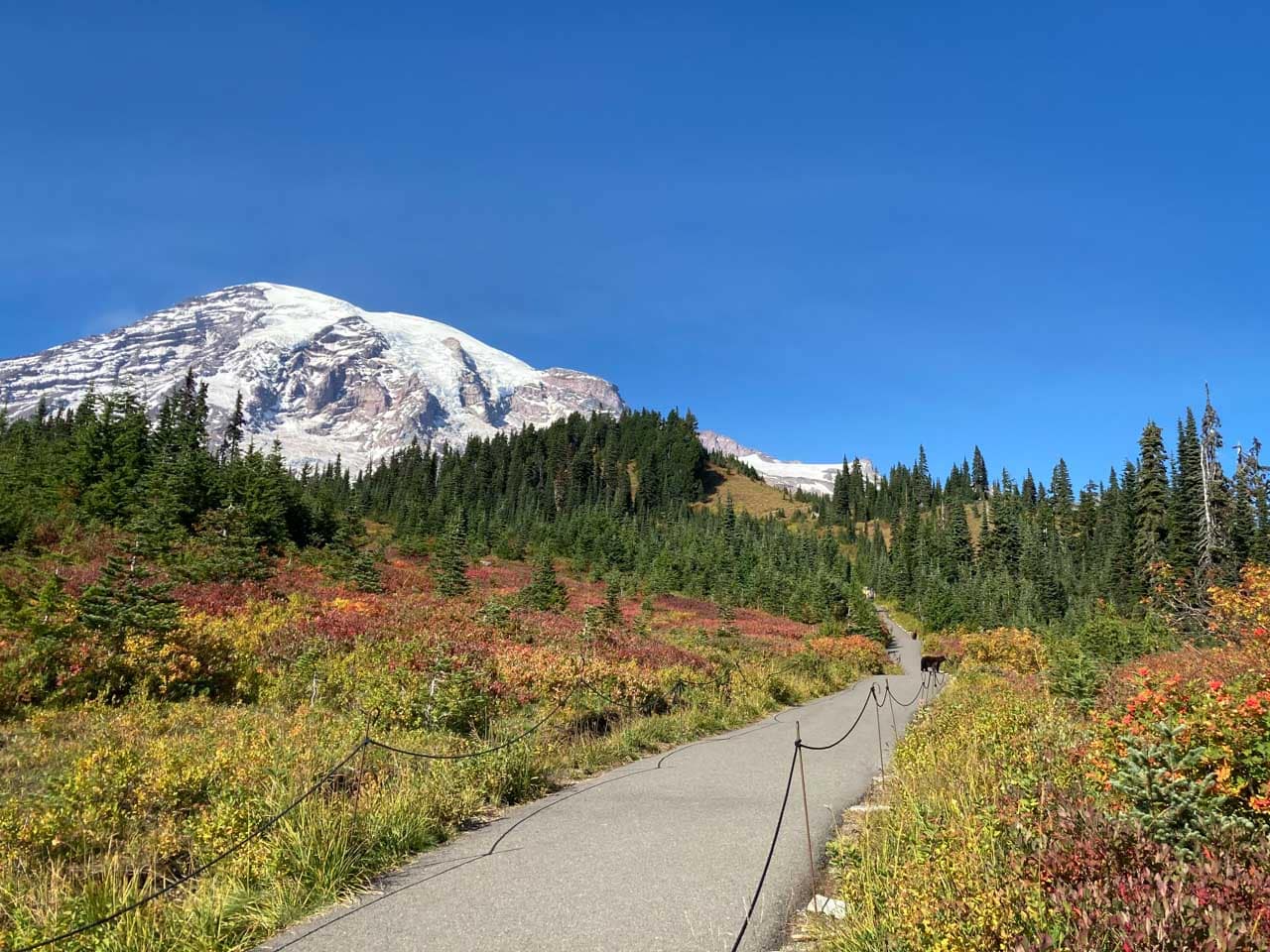
Beautiful Mount Rainier National Park has its fair share of large predators, including mountain lions and black bears, but no grizzly bears. Although mountain lion sightings are very rare, visitor see black bears quite regularly at Mount Rainier.
Your best chances of seeing a black bear in Mount Rainier National Park are on the park’s many hiking trails.
Especially the phenomenal Skyline Trail at Paradise, which is arguably my favorite day hike in the entire U.S. national parks system, is known for its black bear sightings. On one particular fall day, I saw no fewer than six black bears on that trail.
You can also occasionally see a black bear on other trails as well, such as Sourdough Ridge in Sunrise, and in the morning on the Naches Peak Loop.
Best Places to See Black Bears in Mount Rainier National Park
- Skyline Trail
- Sunrise
- Naches Peak Loop
More information about Mount Rainier National Park’s black bears: https://www.nps.gov/mora/planyourvisit/wildlife.htm
More About Mount Rainier National Park
- Park Website
- Travel Guide
- Topographic Map
- Best Mount Rainier Hikes
- Top Things To Do in Mount Rainier National Park
- Viewpoints
- Accommodation
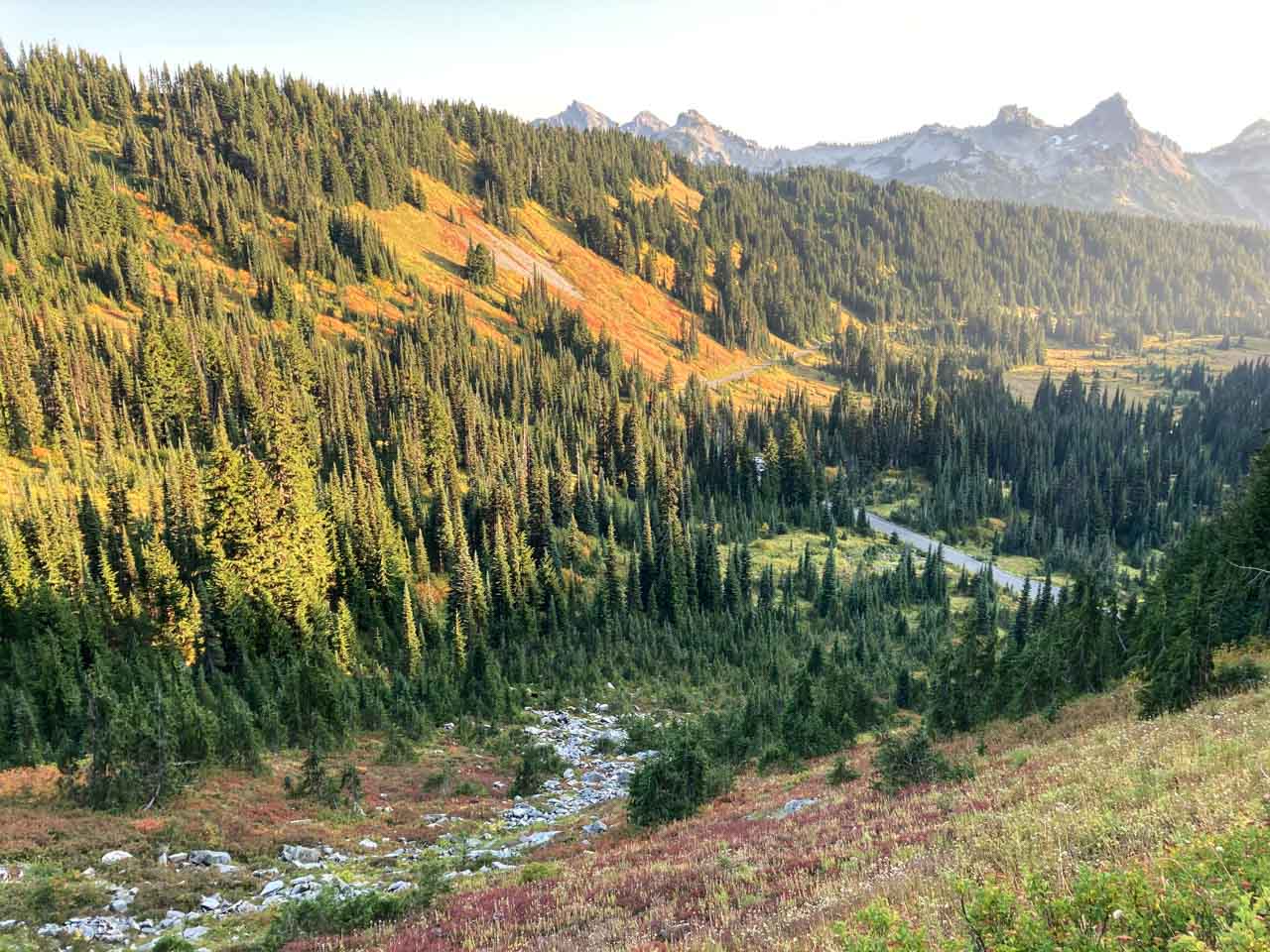
Mount Rainier National Park is not the only national park in Washington that’s home to black bears. The other two Washington national parks, too, have a significant black bear population. Sightings and encounters are pretty common in the North Cascades National Park Service Complex, as well as in remote areas and even on the beaches of Olympic National Park.
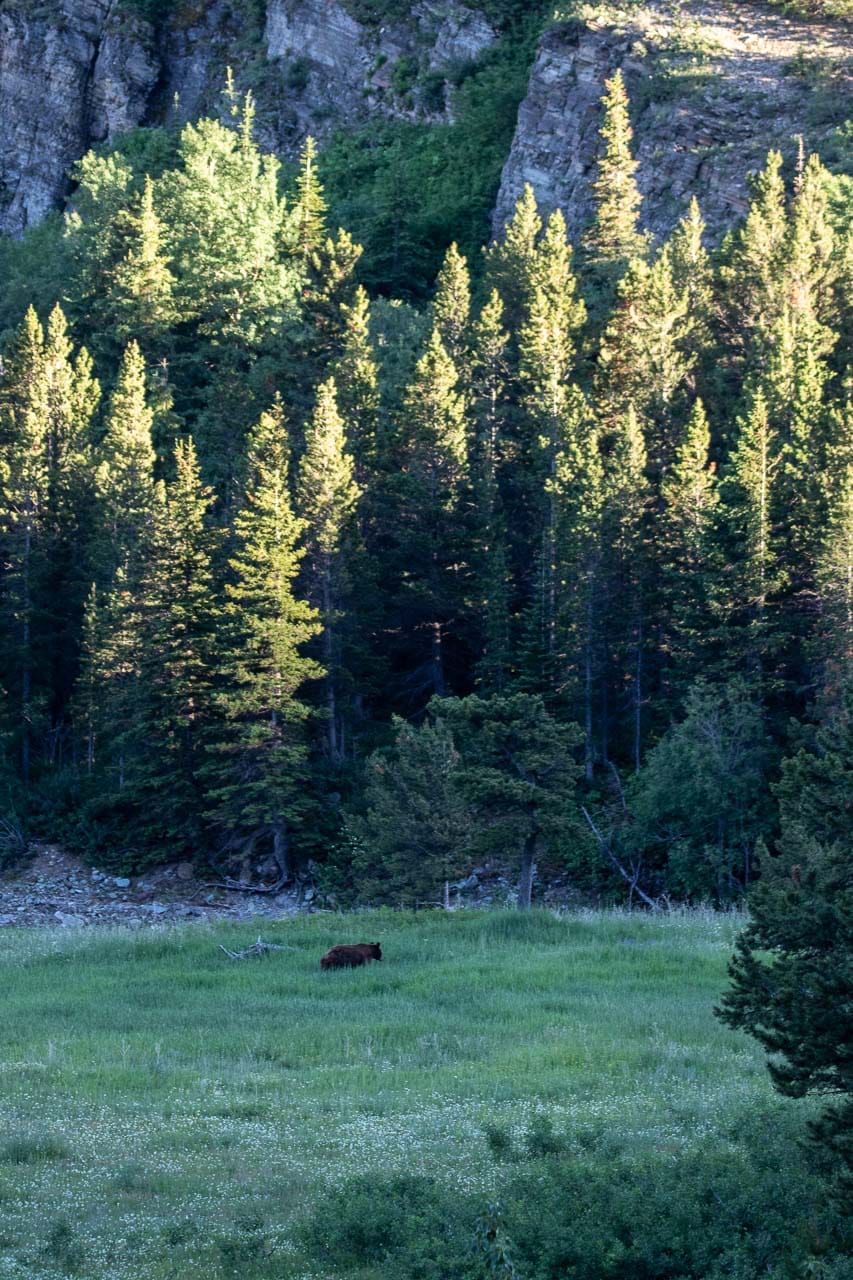
Staying Safe When Watching Black Bears in the National Parks
Although black bears are much more relaxed and easygoing than their grizzly cousins, you should still be very careful when hiking, wildlife viewing or otherwise recreating in black bear country.
- Stay at least 100 yards away from all species of bears.
- Never approach a black bear.
- Use binoculars, a spotting scope or telephoto lens to observe and/or photograph bears.
- Always carry bear spray! Learn how to use bear spray correctly here.
- If your presence causes an animal to move or react, you’re too close. Move away.
- Park in roadside pullouts to watch wildlife. Always make sure all wheels are completely off the road.
You can learn more about black bear safety guidelines in this blog post.
Other National Parks With Black Bears
The list of national parks with black bears is almost as long as the actual list of all U.S. national parks! In addition to the parks above, here are some more that have decent black bear watching opportunities.
- Big Bend National Park, Texas
- Denali National Park, Alaska
- Kings Canyon & Sequoia National Parks, California
- Lassen Volcanic National Park, California
- Redwood National Park, California
- Rocky Mountain National Park, Colorado
- Voyageurs National Park, Minnesota
- Yosemite National Park, California
Have You Ever Seen Black Bears in a National Park? Share Your National Parks Experience Below!
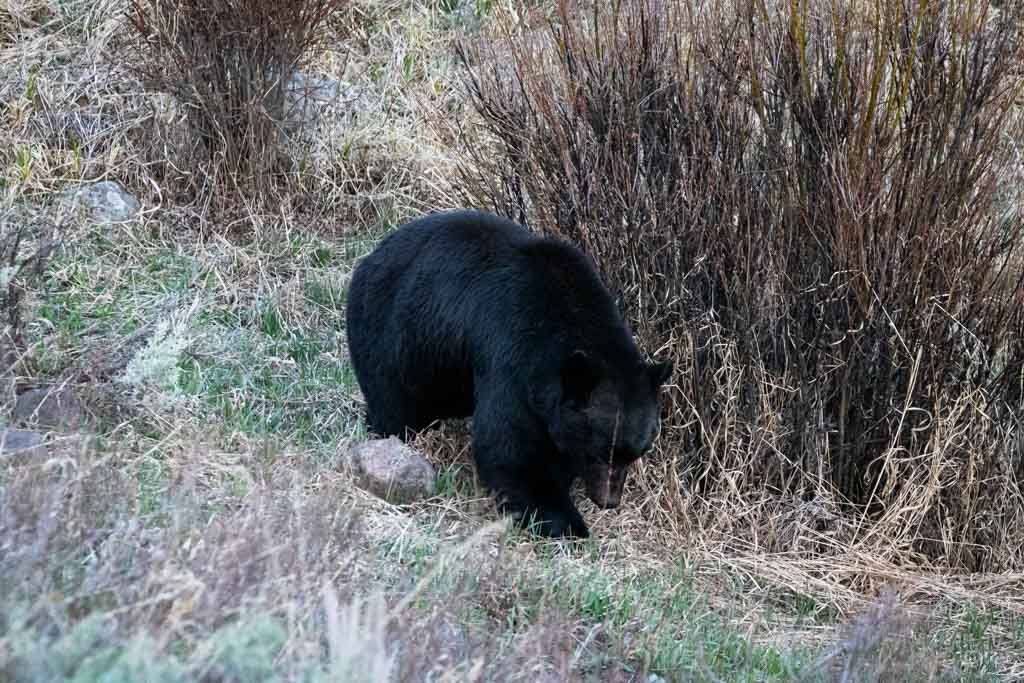



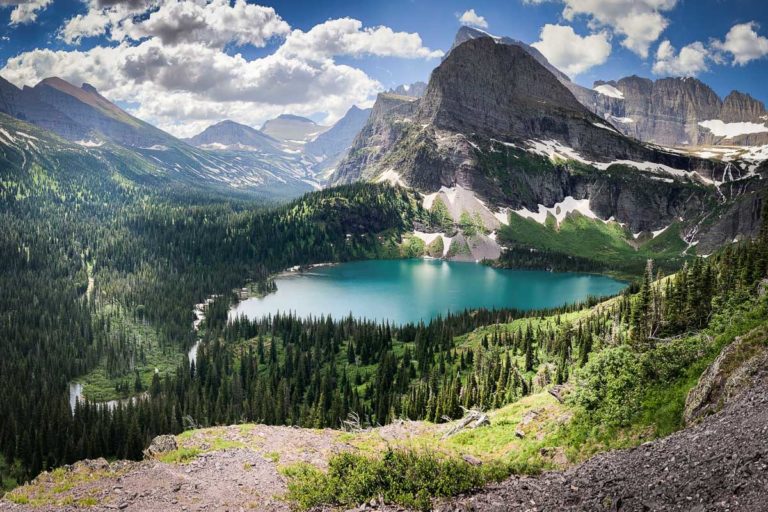



I’ve seen black bears in Yosemite at least three time and was lucky enough to photograph a mom and her cub (she had two but I couldn’t get a shot of the second one) at least once..
Yes, I’ve heard from many people that they’ve seen black bears in Yosemite, too. I’ll consider adding the park to this list once I’ve actually seen a few there myself!
I’m surprised that the Great Smoky Mountains N.P. isn’t listed in this article. We saw several bears there this spring
Although Great Smoky Mountains isn’t separately highlighted in the list, it is mentioned specifically below the section about Shenandoah: “In fact, Great Smoky Mountains has some of the densest concentrations of black bears in the U.S., with an estimated two bears per square mile!”